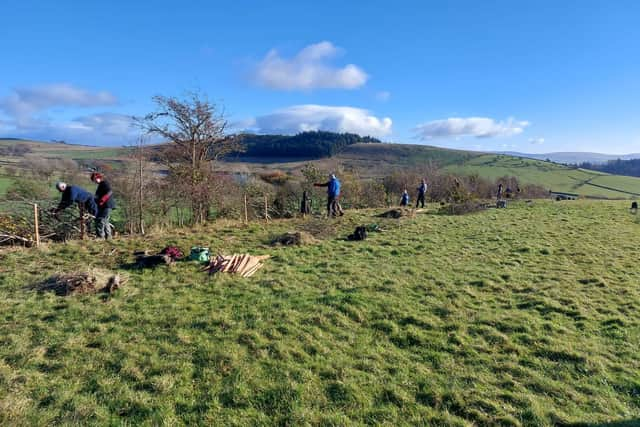Barley volunteers learn the traditional skill of hedge laying
and live on Freeview channel 276
Thanks to support from the Environment Agency the volunteers received free expert tuition from Joe Craig and David Whitaker of the National Hegelaying Society.
The course was held at Overhouses Farm where a hedgerow planted 20 years ago was in need of some restoration. As a hedge grows upwards the individual trees get gappy at the base and sheep and lambs can push through the boundary to the next field, where the grass is always greener.
Advertisement
Hide AdAdvertisement
Hide AdThe skill of laying a hedge is to cut into the base of the hedge stem just enough so that you can bend it over sideways. If you cut too far the hedge will die; not far enough and the stem (or pleacher) will split or snap.


Tutor Joe Craig said: "Restoring hedgerows like these helps preserve the past and protect the future. We need more people to learn and enjoy this craft in order to keep the skills alive and the hedgerows in a healthy state."
Volunteers on the course were taught how to safely use traditional billhooks and axes, as well as more modern saws and loppers. Once the pleachers were laid into line the volunteers banged in wooden stakes to stabilise them and to make a thick hedge.
Over the next few years the hedge will begin to grow from the base of the stem again, and create a living boundary that is an important feature of our farming landscape.
Advertisement
Hide AdAdvertisement
Hide AdHedgerows are very important to wildlife, providing shelter to birds, insects and small mammals as well as to farm animals. The berries growing on thorn bushes and holly are vital winter food for birds who will also nest in what are effectively linear woodlands.
Hedges are important as a carbon store, and they can also help in the fight against flooding and in improving water quality.
Environment Agency Catchment coordinator Helen Dix said: “Hedgerows are one of the important ways we can help slow the flow of water from the land during heavy rain. This natural approach can reduce flood risk to communities and helps keep valuable nutrients in the soil.
"The recent COP26 climate talks in Glasgow represent a major opportunity to drive action around the globe and projects such as this are a great example of how bringing people together can achieve multiple benefits for the environment.”